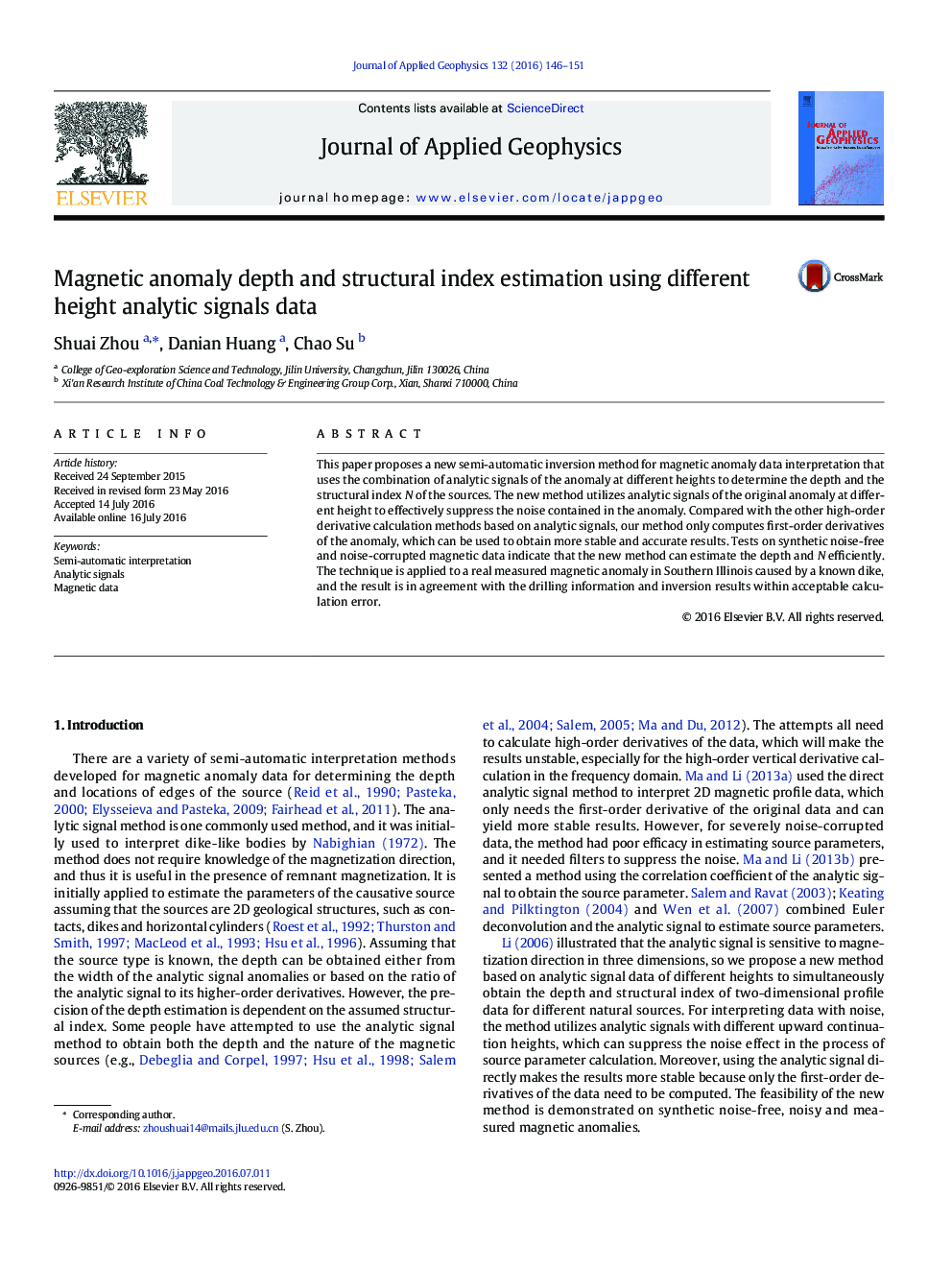| Article ID | Journal | Published Year | Pages | File Type |
|---|---|---|---|---|
| 6446930 | Journal of Applied Geophysics | 2016 | 6 Pages |
Abstract
This paper proposes a new semi-automatic inversion method for magnetic anomaly data interpretation that uses the combination of analytic signals of the anomaly at different heights to determine the depth and the structural index N of the sources. The new method utilizes analytic signals of the original anomaly at different height to effectively suppress the noise contained in the anomaly. Compared with the other high-order derivative calculation methods based on analytic signals, our method only computes first-order derivatives of the anomaly, which can be used to obtain more stable and accurate results. Tests on synthetic noise-free and noise-corrupted magnetic data indicate that the new method can estimate the depth and N efficiently. The technique is applied to a real measured magnetic anomaly in Southern Illinois caused by a known dike, and the result is in agreement with the drilling information and inversion results within acceptable calculation error.
Related Topics
Physical Sciences and Engineering
Earth and Planetary Sciences
Geophysics
Authors
Shuai Zhou, Danian Huang, Chao Su,
